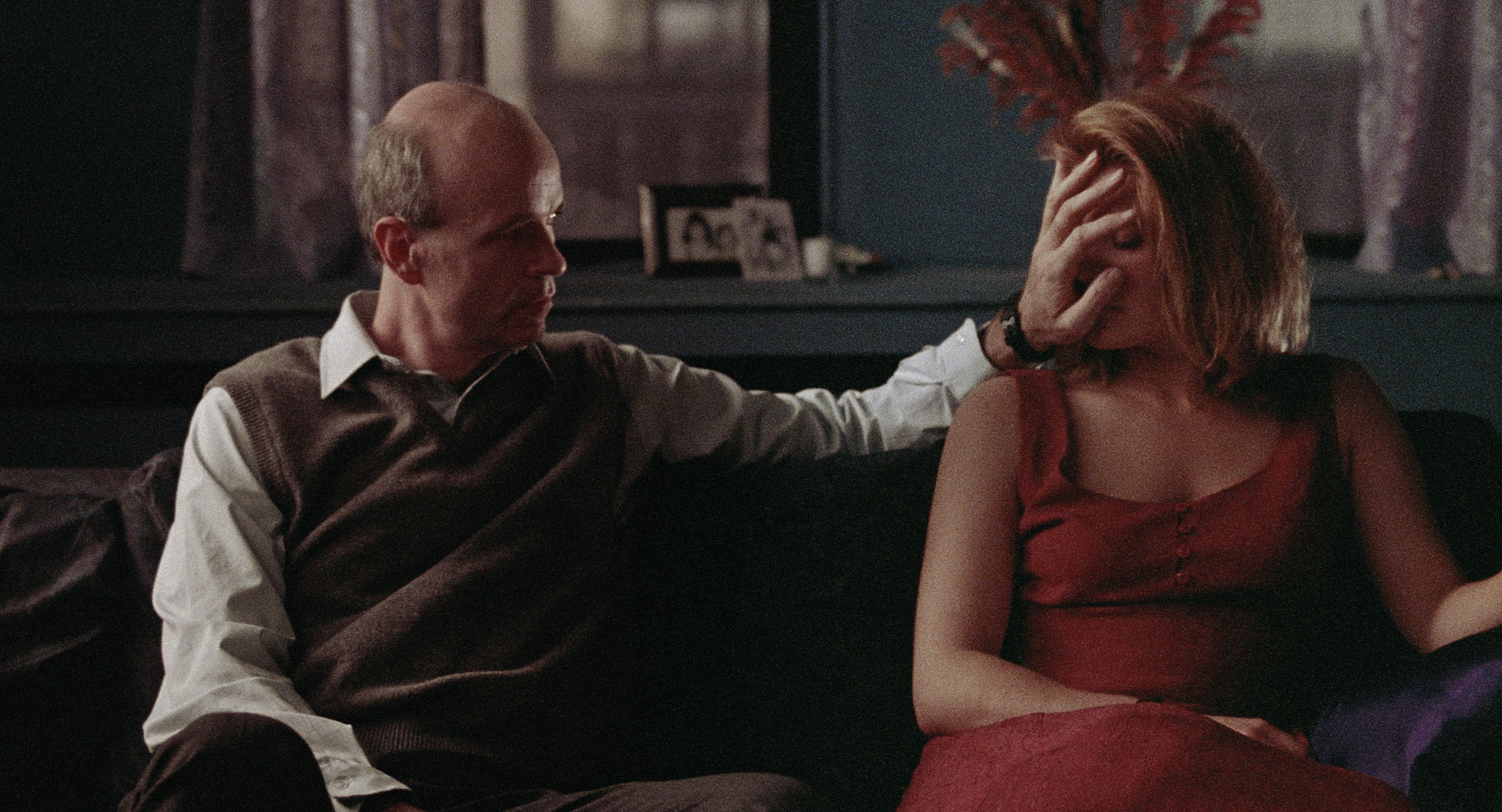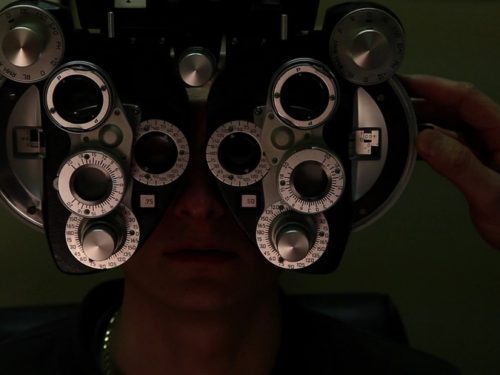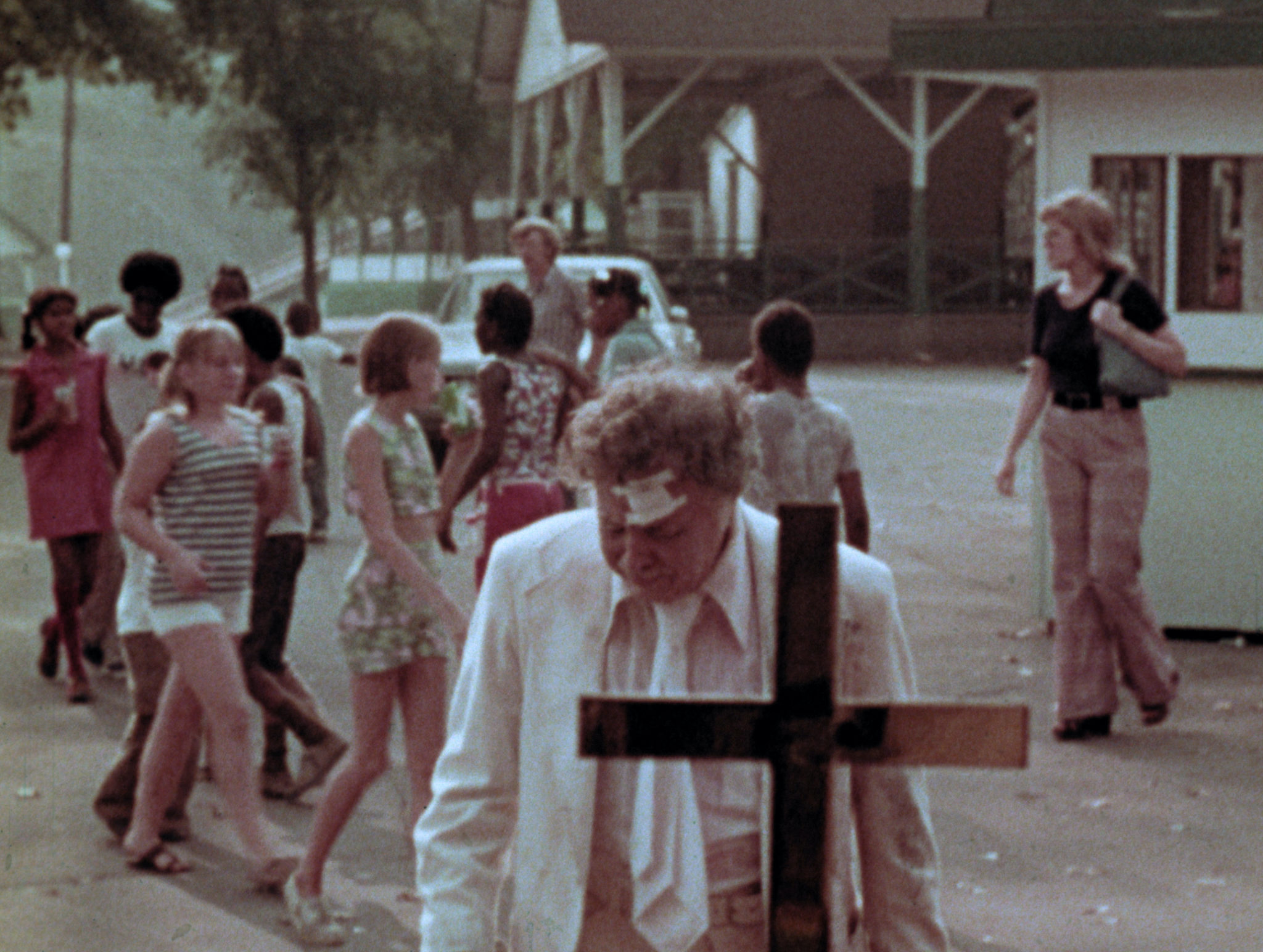Following decades of obscurity and poor quality streaming transfers, Noonan’s classic independent comedy receives new life with a 4K restoration
There may be no better indicator of how extremely damaging and distorting the relationship between art and commerce can be to a work of art than the home video release trailer for What Happened Was… (1994). Images and dialogue are pulled so far out of context from the film itself that the editors might as well have used clips from an entirely different movie. The trailer makes What Happened Was look dangerous and mysterious. A narrator alludes to secrets behind locked doors as the characters stare and stalk around like voyeuristic lunatics playing a deadly game of cat and mouse. For anyone learning of the film through this promo, they would rightly be left expecting a low-budget knock-off of a steamy ’90s sex thriller like Basic Instinct (1992), or even something more extreme like The Silence of the Lambs (1991) — after all, it does star the guy who played the villain in Manhunter (1986). The whole thing seems like a cruel joke played on the actual film.
What Happened Was is in fact dangerous and mysterious — albeit not in a sexy ’90s thriller sort of way. What comes across in the trailer as a cold-blooded, suspense-driven drama is actually an unrelenting, emotionally challenging, and compassionate comedy about two lonely people and a very uncomfortable night they spend together. What Happened Was is an odd film. It’s hard to do it justice with mere words. Upon its premiere, the film did earn its share of praise from critics. It won big at Sundance. Yet its subsequent life has been one of relative obscurity. Miraculously, Oscilloscope Laboratories has given What Happened Was a 4K restoration in 2021, and for this, lonely moviegoers all over the world should rejoice.
Related: People in the Sun: Kelly Reichardt’s Meek’s Cutoff (2010) by Brett Wright
Written and directed by actor Tom Noonan, and based on his stage play, What Happened Was takes place over the course of a single evening spent between two law firm employees who get together for dinner after work. Jackie (Karen Sillas) hosts Michael (Noonan), a strange paralegal she believes to be the smartest guy in the office. She finds Michael oddly attractive and appears nervous and eager to impress him. Michael carries himself with a smirking coolness when he first enters Jackie’s apartment. He arrives with his tie nonchalantly stuffed into his coat pocket and tosses out phrases like “no harm, no foul.” His demeanor creates the impression that everything he sees becomes his own private joke. Yet we quickly start to pick up on little tics and hesitant mannerisms. What initially comes across as aloof confidence gradually shows to be something far more complicated.
Their date night takes form as an unending series of social missteps; each blunder sends shivers down our spines as viewers, but somehow never leads the characters to throw in the towel. At first, it’s a matter of a joke not landing, or Jackie reading too much into one of Michael’s uncomfortably long pauses. But their conversations continually fail to catch a friendly rhythm. Michael shares random knowledge about microwaves and birds, but he mostly talks about himself and his ambitions — particularly as they relate to a tell-all book he claims to be writing about his and Jackie’s law firm. He mentions his Harvard education, which impresses Jackie, even as the topic sends Michael into rants or silence. Michael often says the wrong thing throughout the film, but most of his miscues come about from saying or doing “the right thing” in the strangest ways. His most basic social mechanics operate out-of-order, as when he takes his first bite of the seafood dinner Jackie made. He begins by sniffing the food, drawing his face down to his fork while Jackie watches in turmoil. He pauses, takes the bite, pauses, looks up at her, pauses again, and only then tells her, “It’s good!”

What is perhaps most amazing about What Happened Was is the manner in which its narrative pushes forward. As the night progresses and the wine continues to flow, Jackie and Michael keep pressing into more personal and potentially revealing emotional areas while never really connecting. Their efforts to relate become more desperate and disparate; their personal vulnerabilities become harder to shield. Jackie shares a great deal of herself with Michael, yet Sillas brilliantly plays her role as if she is lost. She seems unsure whether she is leading an interaction or helplessly falling behind what she perceives to be Michael’s Harvard-bred “sense of humor.” She instigates most of the conversations, and is often quite direct in her suggestions to Michael about her feelings for him. Michael mostly responds ambiguously or kills the conversation by veering into a self-centered tangent.
The film explores the power, the potentials, and the limits of its characters’ imaginations, particularly in regard to how they relate to the people and world around them. Both Jackie and Michael express feelings that their lives are taking place somewhere in the world’s peripheries. Jackie mentions that men no longer ask her out. She feels like no one notices her anymore now that she is a bit older. Early in the night, she speaks of relating to the world as an extra in a movie. While looking out the windows of buses, seeing the multitudes of people beyond, she feels like she and the others “don’t really have lives,” as if life itself were somewhere else or reserved for the brilliant and fortunate few. Michael, on the other hand, has to clarify her relation to the extras: He asks if what she really meant was that everyone outside of her feels like an extra in her movie. His gap in understanding here is telling, and the film uses their perspectives to form a sort of two-way mirror view of isolated imaginations. While Jackie talks so much of looking out onto the world and observing Michael at work, Michael’s contributions to their conversations pertain almost exclusively to his own reflections upon himself. Michael boasts of his desire for a life of action and gives the impression that is exactly the life he is leading by writing his book. He, perhaps only slightly unconsciously, aligns his own life and work with those of Emily Dickinson and Schubert — artists unknown in their lifetimes, later hailed as geniuses. Michael promotes an idea that his life is destined for something beyond his current place of obscurity; his genius lies in waiting to be discovered by future generations. Jackie’s imagining of Michael, as the mysterious office rebel, comes from a similar creative impulse. From her vantage of “the extra,” and from the way she describes her experience of looking on at Michael’s workplace interactions and head-butting with superiors, it is clear he has taken on a romanticized role in her eyes. Now, when she’s alone with him in her apartment, the film shows Jackie’s understanding of Michael, a figure she has pinned a great deal of hope upon, doesn’t so much take on a new light, as it does draw out where both characters’ shades lie.
Noonan’s script consistently brings Michael and Jackie down from their hypothetical discussions of living out of time or reach of the rest of the world and back into the here and now of their date night. Just after their talk of living life as an extra, Michael reaches out and touches Jackie in the strangest possible place on her lower back, making her jump and yelp in surprise. He of course meant no harm by this gesture, but the mere presence of the other person in such intimate proximity has them both on edge. They try to establish a rapport through joking or small talk, only to overstep their bounds or misconstrue each new effort. Their jokes turn against them, landing flat or striking a harsher cord than intended, or one will misinterpret the meaning of the other’s anecdote and lead them clamoring to return to a safe topic and semblance of common social ground. For instance, following Michael’s awkward touching of Jackie’s back, he eventually clears the air by striking a toast, raising his glass “to the extras.”
Related: Joel Potrykus’ Midwestern Monsters by Bennett Glace
For all of Michael’s talk of his writing projects and his life of action, it should be noted that Jackie is really the one living the more action-oriented life. Her stories mostly come from her actual life experience. She had a desire to move to the city from Long Island, so she moved and made it work. She loved being around people and she loved music, so she pursued her passions by going to concerts and living a life of excitement in her youth. She wanted to be a writer, so she wrote a book and self-published (you’ll have to watch the film yourself to learn about that). Even in her current state, where she feels the good times may be behind her, she found Michael attractive and pursued him by asking him over for dinner.
As the night comes to a close, Noonan brings the film to a point of emotional nakedness that would have seemed impossible to have reached between these two characters at nearly any other stage in the film. But What Happened Was somehow pulls it off in a way that the sharing of their vulnerabilities opens up not into a cathartic release or mutual understanding, but a furthering of the individual struggles they each live under. They are already as imperfect and human as can be from the beginning, but as the film finally strips away Jackie’s and Michael’s last shreds of emotional defense in its final scene, Noonan illuminates the desperation and gaps in self-knowledge they face regarding their own lives and personalities. And while the film remains painfully funny to the end, it is never cynical. It shows nothing but love for these lonely characters as they recognize the wear and tear on the illusions they have created for themselves to get through each and every day.
Oscilloscope Laboratories’ new restoration of What Happened Was… is now streaming on Amazon Prime and other services
Purchase What Happened Was… on Blu-ray and DVD from Oscilloscope here
Stay up to date with all things Split Tooth Media and follow Brett on Twitter and Letterboxd
(Split Tooth may earn a commission from purchases made through affiliate links on our site.)




